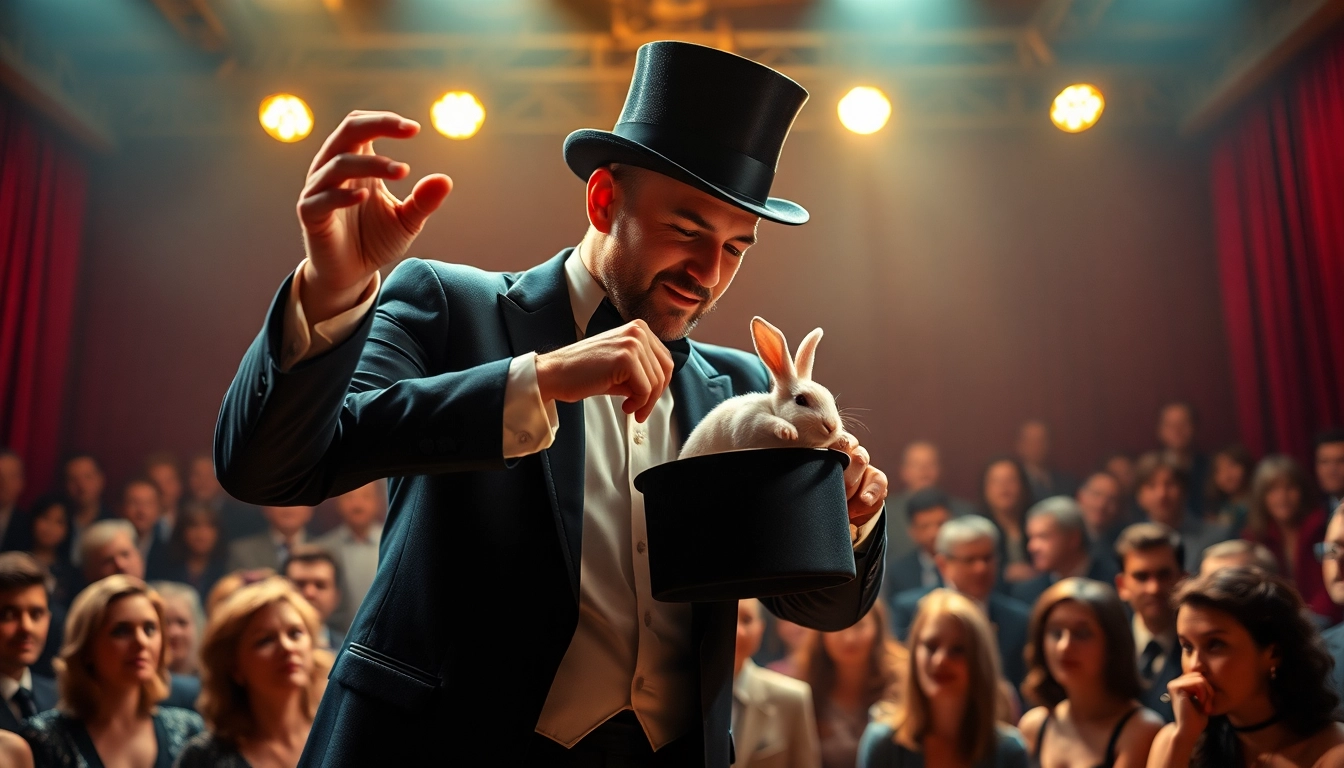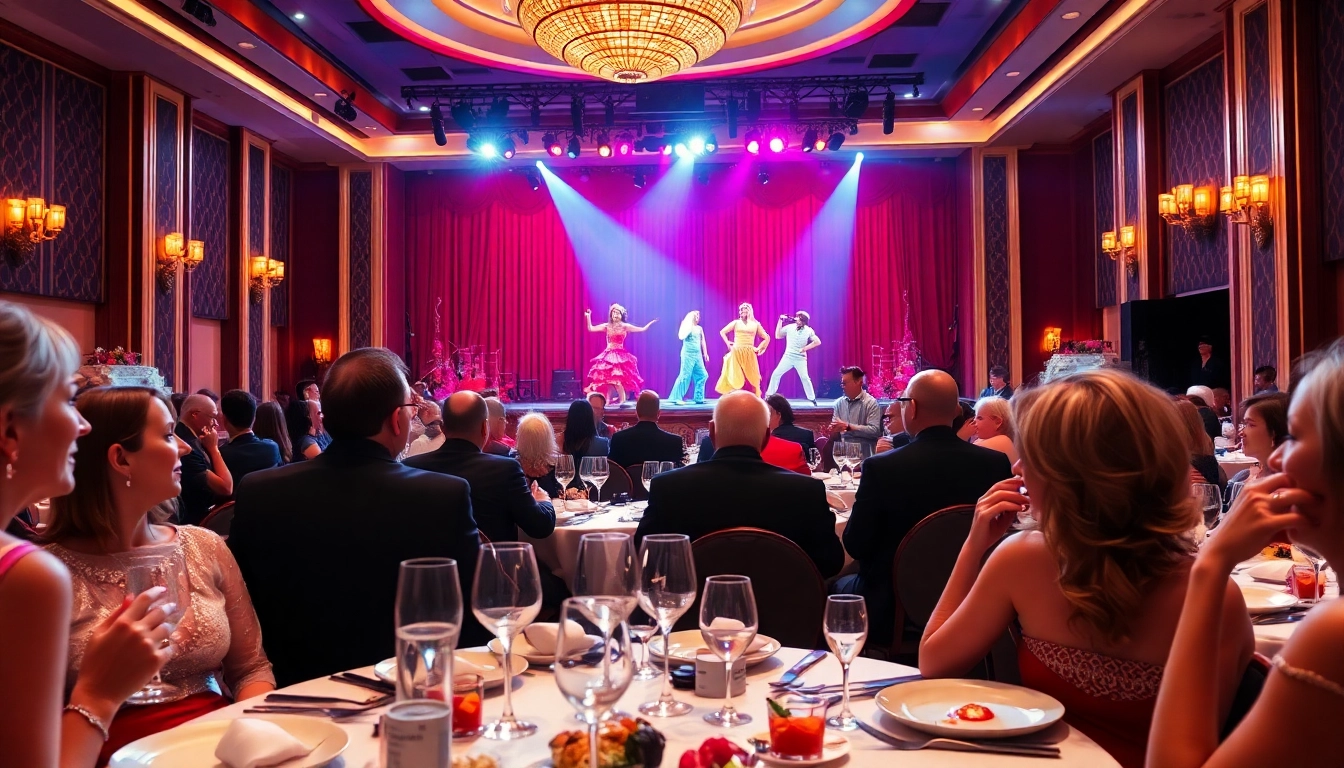Understanding the Essence of a Magic Show
Magic shows have enchanted audiences for centuries, merging the art of performance with the thrill of the unknown. The best magic show captivates participants and transports them into a world where the impossible becomes possible. This seamless blend of entertainment and artistry is what makes magic shows a beloved form of entertainment across cultures and age groups.
What Makes a Magic Show Engaging?
An engaging magic show hinges on several fundamental aspects: story, skill, and spectacle. A well-crafted narrative not only gives context to the tricks but also enhances the emotional resonance with the audience. When combining storytelling with outstanding skillful execution, performers can engage spectators on multiple levels—visually, emotionally, and intellectually.
Key Components of a Memorable Performance
To create a truly memorable performance, various components must align effectively:
- Technical Skill: Mastery of techniques, from illusions to sleight of hand, is imperative. Performers must practice relentlessly to perfect their craft, ensuring that every movement is smooth and precise.
- Visual Elements: This includes stage design, lighting, and props, which should enhance the performance visually. A thoughtful arrangement can draw the audience’s focus and heighten the overall experience.
- Personality: The magician’s persona is crucial. Charm, humor, and authenticity allow the performer to connect with the audience, creating an inclusive atmosphere.
- Surprise and Wonder: The element of unexpectedness keeps the audience on the edge of their seats, fostering a sense of wonder that is integral to the magic experience.
The Role of Audience Interaction in a Magic Show
Audience interaction plays a significant role in magic shows, often transforming a passive viewing experience into an engaging interactive event. Inviting audience members on stage or involving them in tricks fosters a connection and escalates their involvement. By making spectators a part of the act, magicians can personalize their performance and enhance their illusion’s impact.
Types of Magic Show Techniques
The art of magic encompasses a variety of techniques, each offering unique possibilities for astonishing an audience. Understanding these techniques can aid performers in creating their distinct style.
Illusions: Crafting the Impossible
Illusions are grand spectacles that typically require significant resources, including elaborate props, assistants, and even the stage itself. Classic examples involve making someone disappear or appearing to defy gravity. These acts can leave viewers questioning reality and provoke awe. Successful illusionists combine storytelling with technical skills to draw the audience into the world they create, enhancing the sense of disbelief.
Sleight of Hand: Mastering Subtlety
Sleight of hand is a delicate and intimate form of magic that relies on dexterity and precision. It often incorporates card tricks, coin manipulation, and other forms of close-up magic. The beauty of sleight of hand lies in its subtlety; a performer can create stunning effects just inches from the audience’s eyes, showcasing their skill in an intimate setting.
Mentalism Techniques for a Magic Show
Mentalism is a subset of magic focusing on the mind rather than physical illusions. It involves psychological techniques to create the illusion of mind reading, prediction, or influence. Mentalists often use cold reading, linguistic cues, and audience psychology to craft their performance. This branch of magic captures the imagination and fosters discussion, as audience members are left pondering the extent of the performer’s abilities.
Preparing for Your First Magic Show
A successful magic show begins long before the lights dim and the curtain rises. Comprehensive preparation and thoughtful planning are vital to ensure a seamless performance.
Choosing the Right Venue for a Magic Show
The venue selection can profoundly impact the success of a magic show. Considerations should include audience capacity, layout, and acoustics. An intimate setting allows for close-up magic to shine, while larger venues may provide opportunities for grand illusions. Ultimately, the best choice resonates with the show’s style and audience demographics.
Essential Equipment and Props for a Magic Show
Each magic performance requires a unique set of equipment and props to achieve the desired effect. From simple decks of cards to elaborate stage setups, the tools of a magician’s trade can significantly enhance the performance. It is crucial to invest in quality props and ensure they function as intended. Additionally, customizing props to fit the narrative can make the performance even more captivating.
Rehearsal Strategies for a Flawless Magic Show
Rehearsals are critical to building confidence and honing performance. Here are some strategies to ensure thorough preparation:
- Regular Practice: Regularly rehearse tricks and routines to refine techniques and discover any potential pitfalls.
- Feedback Sessions: Gather a trusted group of peers to provide constructive feedback. This allows performers to address weaknesses or refine elements before the show.
- Record Performances: Watching recorded practices helps identify areas for improvement and track progress.
Marketing Your Magic Show Successfully
Even the most talented magician won’t succeed without a solid marketing strategy. Promoting your magic show effectively can determine your event’s visibility and audience turnout.
Creating an Engaging Online Presence for a Magic Show
In today’s digital age, a well-rounded online presence is crucial for any performer. Start by developing a professional website that showcases your bio, performance clips, and testimonials. Incorporate a blog featuring insights about the art of magic, behind-the-scenes footage, and information about upcoming shows. This content not only engages potential audiences but also improves search engine optimization.
Utilizing Social Media to Promote Your Magic Show
Social media acts as a powerful tool, enabling magicians to directly connect with audiences. Platforms like Instagram and Facebook allow performers to share live snippets, promotional content, and engage with fans. Creating exciting and shareable content increases visibility, while regular interaction with followers fosters a sense of community. Additionally, social media advertisements can target specific demographics, effectively reaching potential attendees.
Collaborating with Event Organizers for a Magic Show
Partnering with event organizers, venues, and other entertainers can enhance exposure and credibility. Such collaborations can lead to cross-promotional opportunities, where each party benefits from shared audiences. Establishing relationships with local businesses or community organizations can also generate interest and lead to potential bookings. Networking with fellow magicians may open doors for joint performances or mentorship as well.
Measuring the Impact of Your Magic Show
Understanding the effectiveness of your magic show is essential for growth and refinement. Collecting data and feedback allows performers to assess their impact and make necessary adjustments.
Gathering Audience Feedback for Your Magic Show
Customer feedback is invaluable in gauging audience reactions. Create post-show surveys or feedback forms to glean insights into what resonated with attendees. Engage directly with the audience during or after the show to solicit their impressions. Analyzing this feedback can highlight strengths while pinpointing areas needing improvement, ensuring continual growth as a performer.
Evaluating Performance Metrics for a Magic Show
Look beyond subjective feedback to include performance metrics as a form of evaluation. Metrics can include ticket sales, audience size, social media engagement, and repeat customers. Tracking analytics on your promotional efforts will give you insights into which strategies worked effectively and which need adjustment, allowing for a data-driven approach to enhancing performances.
Adapting Your Style Based on Audience Reception of a Magic Show
Flexibility is a significant asset for any magician. Learning to read an audience’s reaction during a performance can provide real-time data on what resonates. If a particular trick or style fails to generate the intended response, adapting on the fly can salvage the experience. Over time, analyzing audience trends will also allow magicians to evolve their artistry, aligning their performances to better fit audience expectations.



